Exhibition Highlights History of Famed Cobalt Blue Ceramics
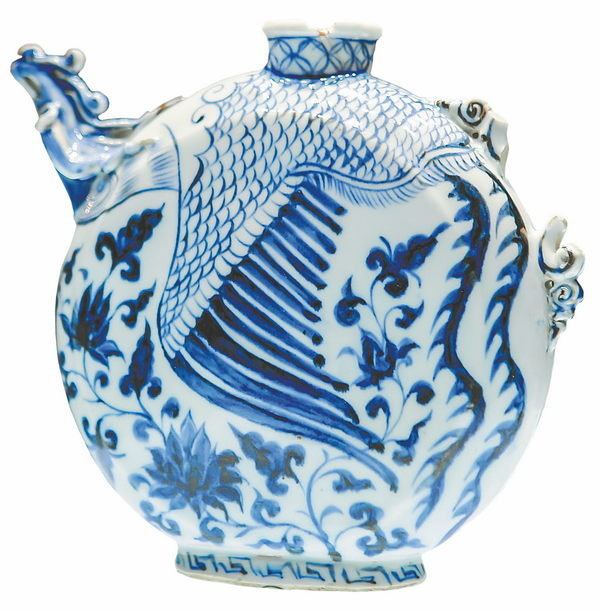 |
| A qinghua porcelain flask from the Yuan Dynasty is on show at Poly Art Museum in Beijing. [China Daily] |
Qinghua (blue-and-white) porcelain is among the brightest jewels of Chinese artwork.
Discerning collectors view it as a lifetime goal to own examples of the fine, centuries-old pottery, which, under a layer of creamy glaze, bears decorative patterns created using a vivid cobalt pigment on a white base.
It is believed that kilns in Gongxian County, in what is today's Henan Province, began to make qinghua ceramics in the ninth century, and by the 14th century, workshops in Jingdezhen, Jiangxi Province, achieved a mastery of technique and artistry in the production of such ceramics.
The porcelain gained such widespread popularity among diverse social strata that, over time, it has featured in literature, films, TV series and pop culture — the most well-known being a song by Jay Chou titled Qing Hua Ci (blue-and-white porcelain).
The history of qinghua ceramics is now being displayed at Memoirs of Cobalt, an exhibition at Poly Art Museum in Beijing. The show reviews the origin and evolution of the blue-and-white ceramic. It brings together dozens of pottery shards, from as early as the Tang Dynasty (618-907), as well as fine examples of qinghua porcelain from the Yuan (1271-1368) and Ming (1368-1644) dynasties, when the ceramics became known outside China.
Li Yizhou from Beijing Poly International Auction's department of Chinese artworks says qinghua porcelain is such a far-reaching symbol of influence that even people who know little about Chinese culture would be able to recognize it.
"It is not only a treasure of the Chinese civilization, but also testimony to the cultural exchanges between China and the West through the centuries," Li says.
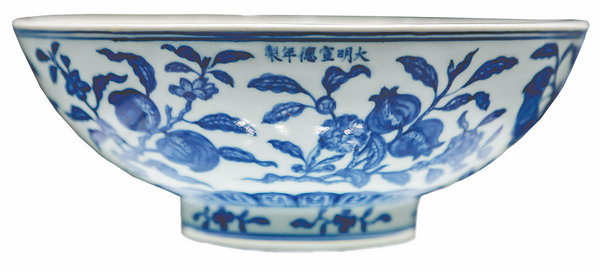 |
| A Ming-era qinghua bowl on show [China Daily] |
Objects on show are from the collection of the Jingdezhen Imperial Kilns Museum, in Jingdezhen, and private assemblies in China, Europe and Asia, and together they illustrate the booming production of qinghua ceramics and its role as an ambassador, linking ancient China with the world in terms of trade, art and culture.
Yuan-era ceramics on show exhibit a variety of shapes, forms and motifs of qinghua art, such as the yuhuchun (literally "jade bottle of spring") vase, a pear-shaped bottle that has a flared rim and a low straight foot. And there are "plum "vases, of which the small, narrow rim would remind users of the thin branches of a plum tree. Also on show are the high-foot cups that reflect the lifestyle of nomadic tribes on the grasslands. The decorations include phoenixes, human figures, birds, insects, plants and geometric motifs, showing both Chinese cultural traditions and influences from overseas.
Highlights on display include a Yuan-era porcelain flask, featuring a phoenix head-shaped mouth and patterns of phoenixes and peonies.
Li says similar objects can be found in the collection of the Capital Museum in Beijing and among artifacts excavated from an ancient site in the Xinjiang Uygur Autonomous Region in 1998.
"The flask's mouth is delicate but well-preserved, and the colors and coating exemplify the creamy, fine texture of Yuan qinghua ceramics," he adds.
The exhibition ends on Saturday.
(Source: China Daily)
Please understand that womenofchina.cn,a non-profit, information-communication website, cannot reach every writer before using articles and images. For copyright issues, please contact us by emailing: website@womenofchina.cn. The articles published and opinions expressed on this website represent the opinions of writers and are not necessarily shared by womenofchina.cn.


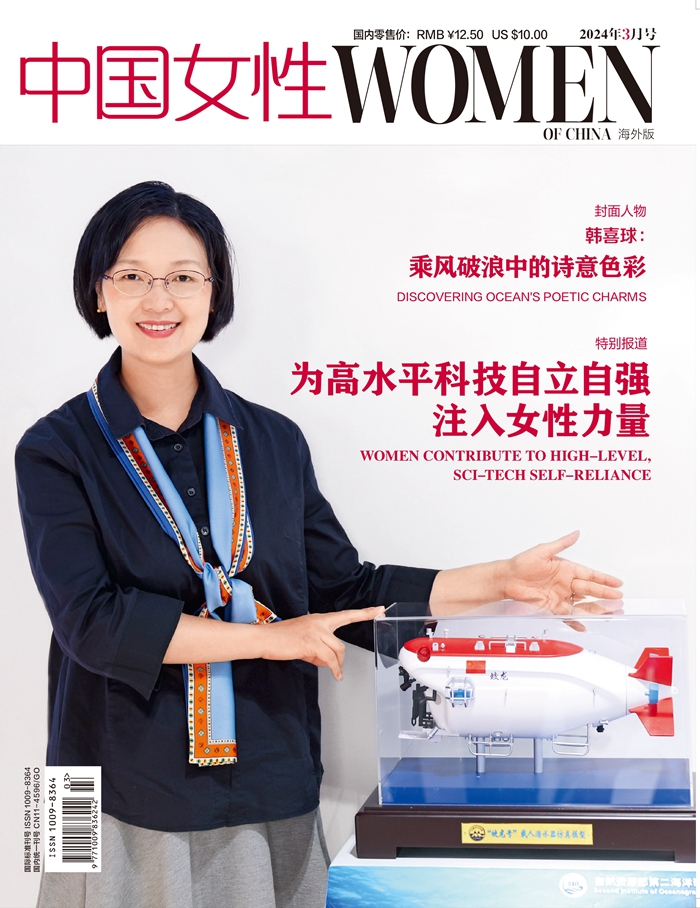

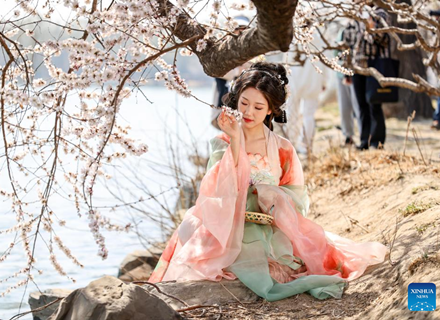
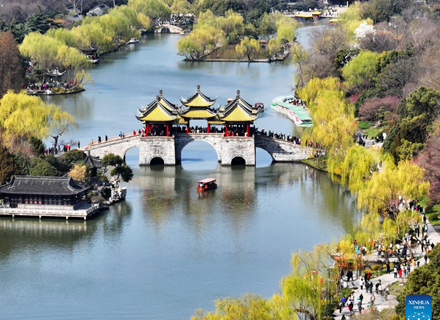


 WeChat
WeChat Weibo
Weibo 京公网安备 11010102004314号
京公网安备 11010102004314号